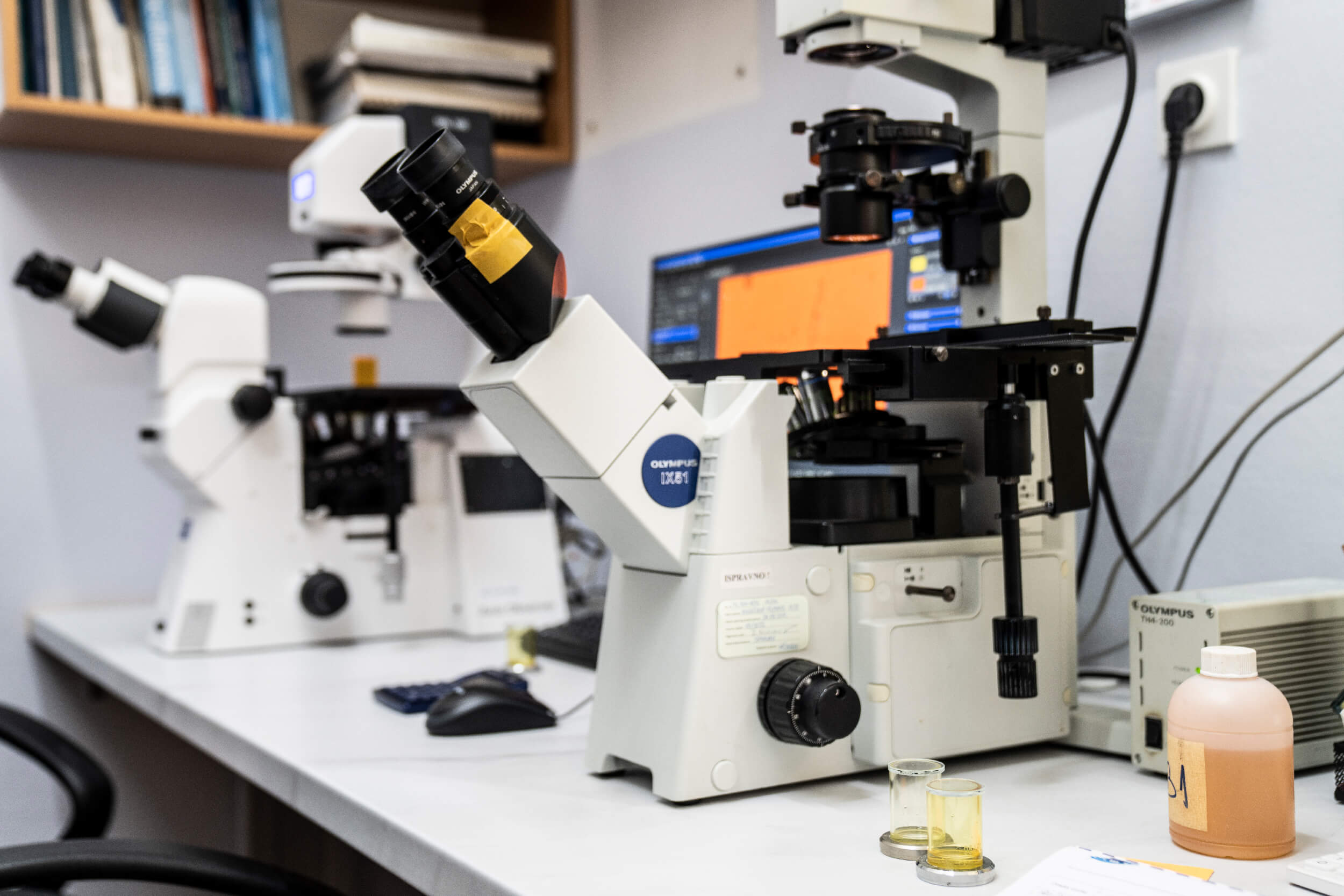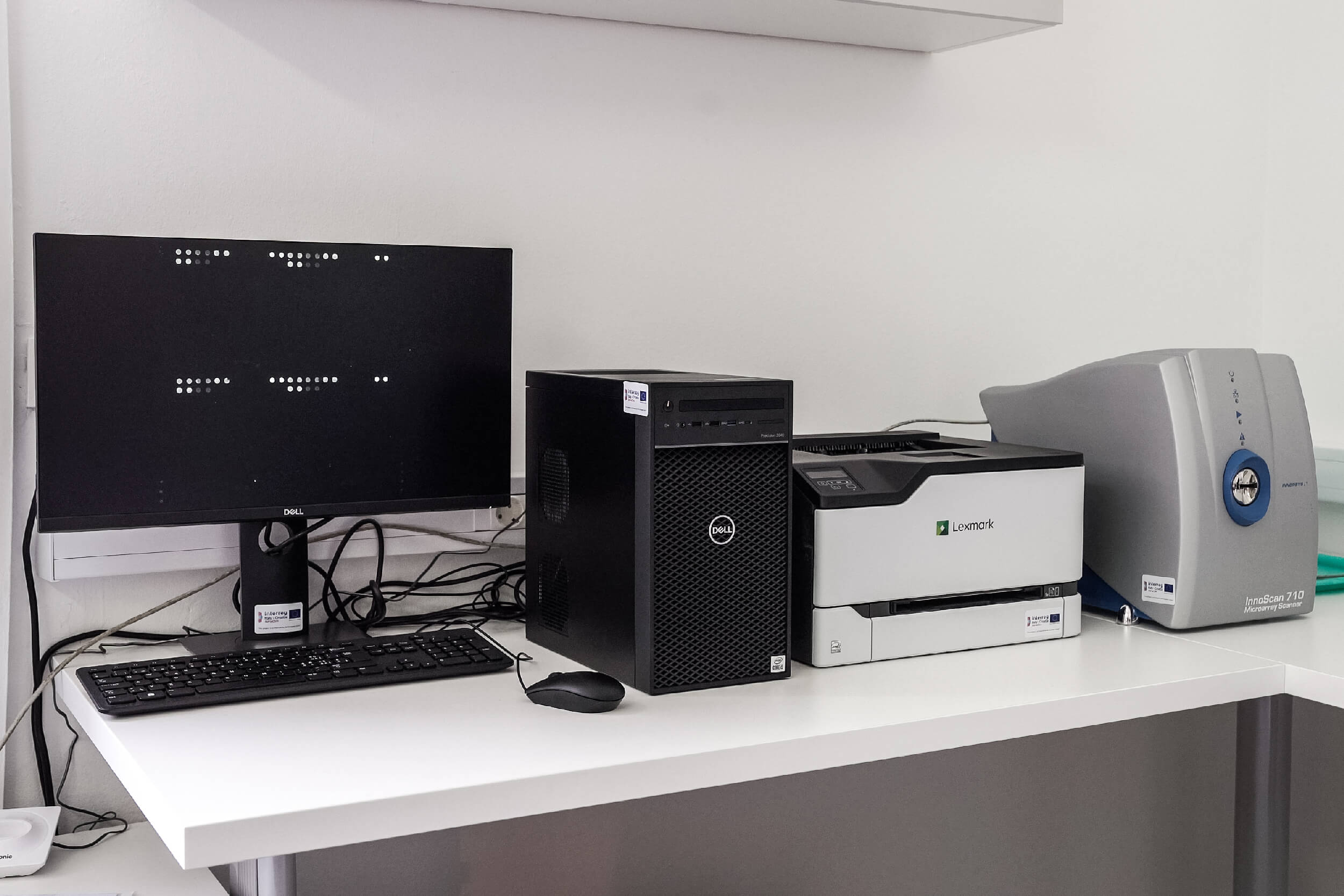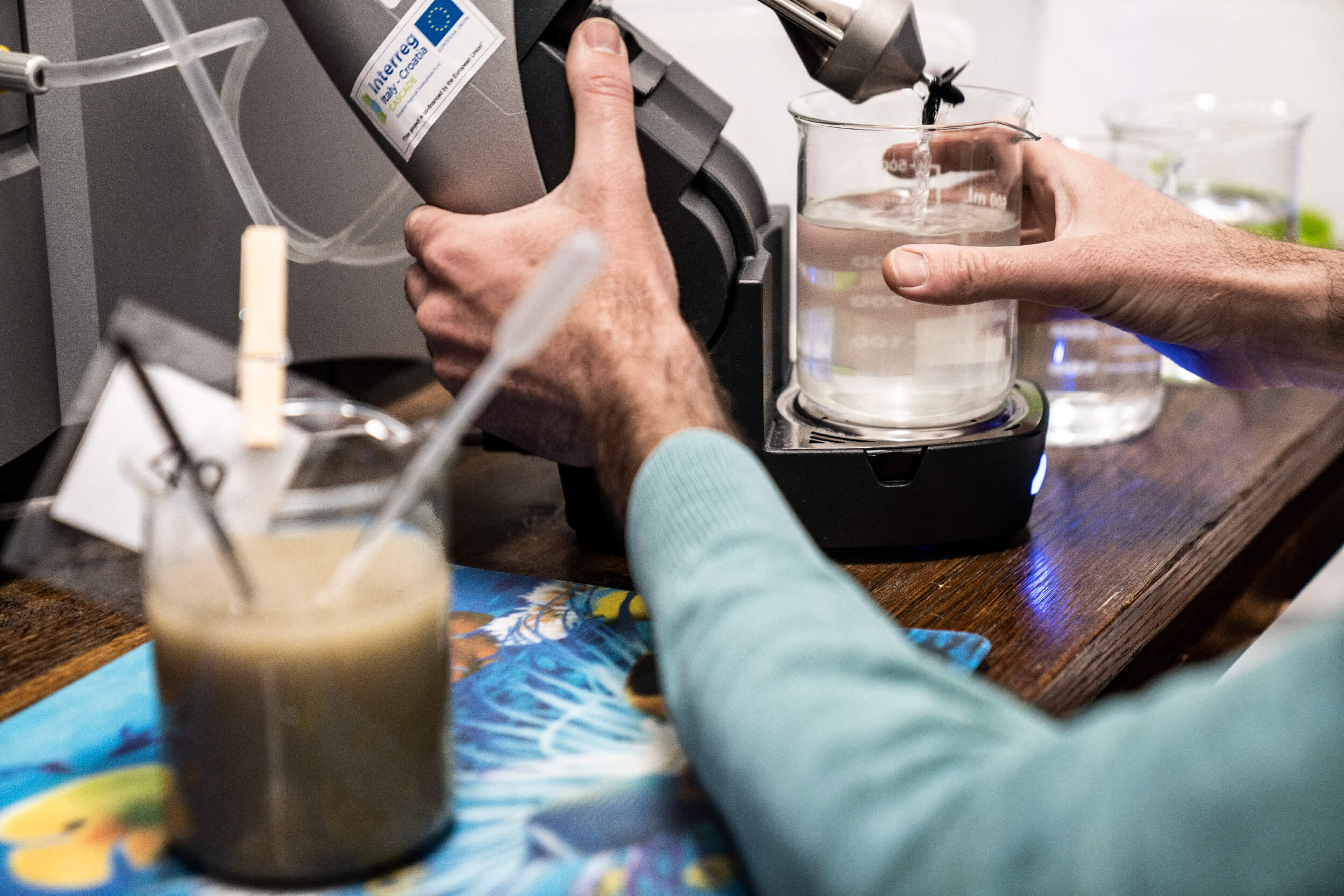Data for future
In the Kaštela Bay, the study of coastal ecosystems is intertwined with history.
Decades of data are collected in the library of the Institute of Oceanography and Fisheries in Split, where different disciplines work together to monitor the evolution of coastal environments over time. Generations of researchers follow in an effort to expand knowledge related to human impacts on these delicate ecosystems with the help of new technologies. Today, the bay is subject to coastal erosion and phytoplankton overeproliferation due to rising sea levels and increasing temperatures.
Science is a team effort
Coasting the Kaštela bay from west to east, you can reach the lush promontory of the Marjan park. Located at its tip you will find the Institute of Oceanography and Fisheries (IOF) in Split, a historical site for Croatian oceanographic research, where a multidisciplinary team collaborates to safeguard the coast and the sea. IOF was founded in the 1930s and since then has been studying the complex interactions that shape the Adriatic marine environment, collecting physical, chemical and biological data on the surrounding marine ecosystems.
Research between past and future
Walking through the corridors of the institute, one can admire the technological evolution of the disciplines that study the sea thanks to long shelves where instruments from the past are displayed. The research produced, on the other hand, looks into the future thanks to innovative technologies that analyze the functioning of ecosystems in order to protect them from the impact of human activities on the environment.
The sea is changing
The marine environment is an interconnected system, its complexity is reflected in the many laboratories found at IOF. With the extensive interdisciplinary data sets available in the archives of this historic institution, researchers learn from the past and are able to assess the state of marine ecosystems on a broader time scale. They can thus monitor the effects of anthropogenic climate change on the Kaštela Bay area and the Croatian coast. In this regard, increasing water temperatures and salinity have been observed in recent years, with extreme marine heat waves. Higher temperatures caused an intensified proliferation of phytoplankton, microalgae that form the first link in the marine food chain. Some of these microorganisms release toxins that are harmful to shellfish and seafood, for this reason they are being monitored by IOF.
New laser technologies for microbiology
The journey through the history of oceanography continues. On the upper floors of the institute you can find the marine microbiology laboratory, where, thanks to the AdriaClim project, a latest-generation flow cytometer was recently purchased. This instrument is used to monitor communities of microorganisms, including possible toxic phytoplankton. The cytometer classifies microorganisms based on the physical properties of the cells, using a laser technology.
From the microscope to genetic analysis
Phytoplankton communities play a key role in the marine environment; these tiny organisms influence the entire food chain and consequently regulate the flow of energy in aquatic ecosystems. The increased spread of toxic species presents a risk to shellfish, which accumulate harmful toxins by feeding on them. At IOF, the effects of climate change on phytoplankton composition are studied by the laboratory for plankton and shellfish toxicity, which recently underwent a historic change. Once, the lab only had a light microscope to identify harmful phytoplankton species. Now, with funds from the AdriaClim project, they acquired a microarray scanner, a tool that uses genetic information to classify microorganisms.


A race against time
The history of life above and below the sea surface, starting with the smallest of living things, is deeply linked to environmental changes and biogeochemical cycles. Sediments are an important component of the marine system, as well as sentinels of change. The IOF sedimentology laboratory has been collecting information on the characteristics of sediments carried from the coast to the sea for decades, through a slow process of analysis that takes about a week once a sample is taken. To speed up these analyses in the face of sudden changes in climate, a laser diffraction particle size analyzer was purchased, which provides sediment size data in a few hours.


New directions
The hundreds of notebooks on which researchers have carefully reported the results of their research over the years, now collected in the IOF’s valuable archive, bear witness to the changes that are taking place in Kaštela Bay and throughout the Adriatic Sea coast. Some of these, such as sea level rise and algal blooms, are easily recognizable and pose significant risks to marine wildlife and local communities. The future looks uncertain, but new methods and technologies allow researchers to provide information and projections on how marine ecosystems are responding and will respond in the face of a changing climate.
“Adaptation measures are not a gamble. Scientists, through monitoring, are able to provide intelligent directions to take for the well-being of future generations”
Natalija Dunić, research associate in ocean physics.